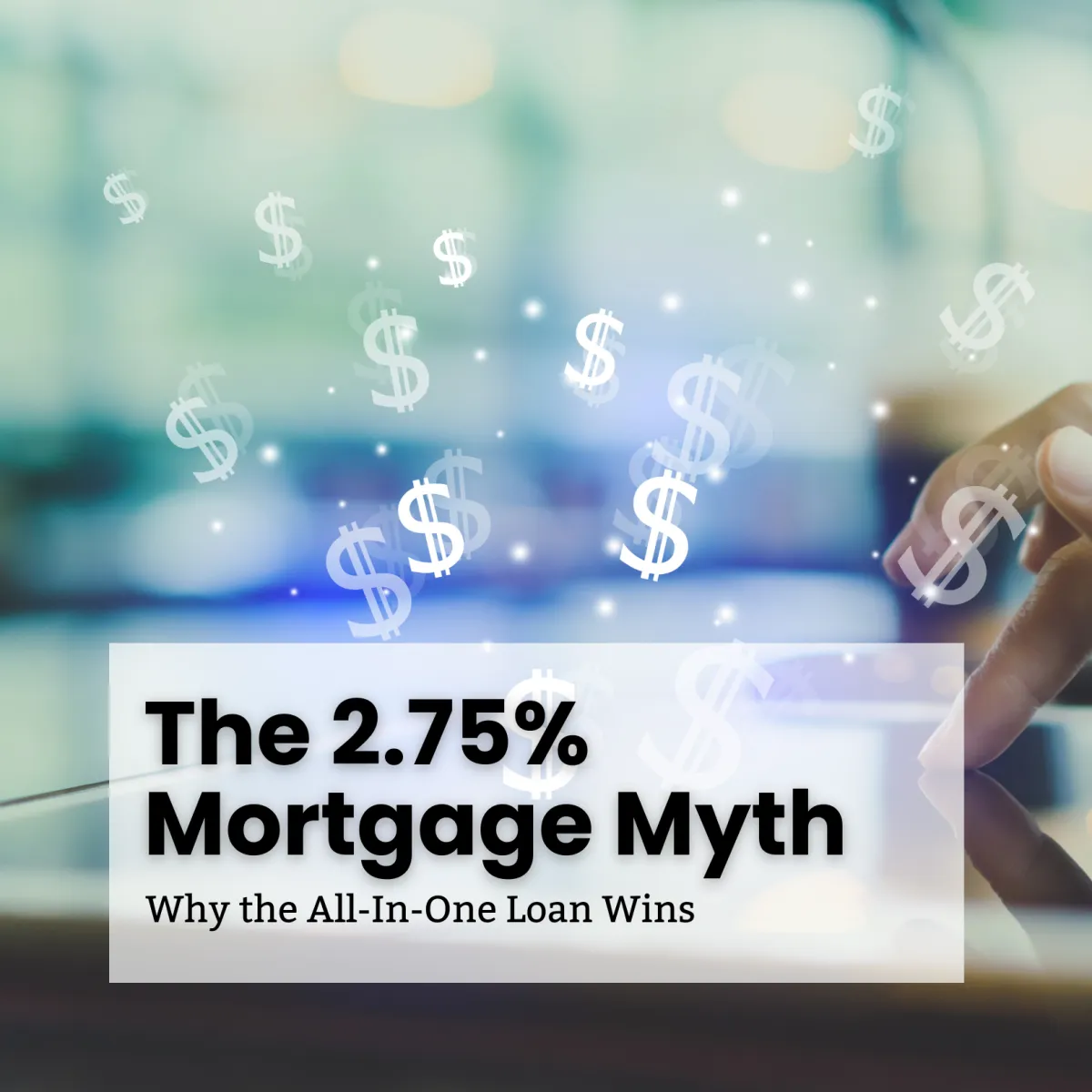
2.75% Isn’t Always the Best Deal: The Truth About Mortgages
At first glance, a 2.75% mortgage looks like a golden ticket. Why would anyone refinance out of such a low rate? The truth is, your rate doesn’t tell the full story. What matters isn’t just the advertised percentage—it’s how much interest you’ll actually pay over the life of the loan. And that’s where the All-In-One Loan™ (AIO) can completely change the math.
According to Bankrate, amortized loans front-load interest, meaning you pay far more in interest in the early years than you realize (https://www.bankrate.com/mortgages/amortization-schedule/). That’s why even a “cheap” 2.75% loan can cost six figures in interest.
Why Low Rates Aren’t Always What They Seem
A 2.75% mortgage feels unbeatable. But here’s what homeowners often miss: the interest is stacked at the front of the loan. In the first five years, the majority of your monthly payment goes to the bank—not toward your equity. By the time you build real traction, years (and tens of thousands of dollars) are gone.
This is how banks win even at “low” rates.
The Hidden Cost of “Cheap” Debt
Let’s run the numbers. On a $400,000 loan at 2.75% over 30 years:
Monthly payment: about $1,633
Total interest paid: nearly $187,000
That’s money straight into the bank’s pocket—on a loan most people consider “cheap.”
Now compare that to an All-In-One Loan™.
How the All-In-One Loan Flips the Equation
The AIO combines your mortgage and bank account. Every deposit you make goes straight to reducing principal. Interest is recalculated nightly. That means:
Your income works for you the day it hits.
You save interest daily, not monthly.
You keep full access to your money for expenses or emergencies.
Over time, this structure lowers your effective interest rate far below what’s advertised.

Example: 2.75% 30-Year Mortgage vs. All-In-One Loan
Scenario: $400,000 loan balance, $1,000 monthly surplus income.
Traditional Mortgage (2.75% fixed, 30 years):
Payoff: 30 years
Total Interest: ~$187,000
All-In-One Loan:
Payoff: ~15 years
Total Interest: ~$95,000
Savings: ~15 years sooner and ~$92,000 less in interest—even though the advertised AIO rate is higher.

Why Liquidity Matters More Than Just Low Rates
When you throw extra money at a traditional mortgage, those funds are locked away. With the AIO loan:
Your money reduces interest daily.
You still have full access to withdraw for emergencies or investments.
You maintain both flexibility and efficiency.
For FIRE-minded and financially strategic borrowers, this balance of control and savings is key.
Who Should Consider Refinancing Into the AIO Loan?
The AIO loan isn’t for everyone. It works best for:
Borrowers with consistent surplus income (spending less than they earn).
Homeowners who value cash flow and flexibility.
Strategic planners who want to minimize long-term interest and maximize wealth.
If you’re house-poor or living paycheck to paycheck, a traditional fixed mortgage may still be the safer choice.
Risks and Suitability
Like any tool, the AIO loan comes with trade-offs:
Variable Rates: Higher rates can reduce the payoff advantage if cash flow is tight.
Discipline Required: Easy access to equity can tempt overspending.
Learning Curve: It requires understanding how the structure works.
But for disciplined borrowers, the rewards can far outweigh the risks.